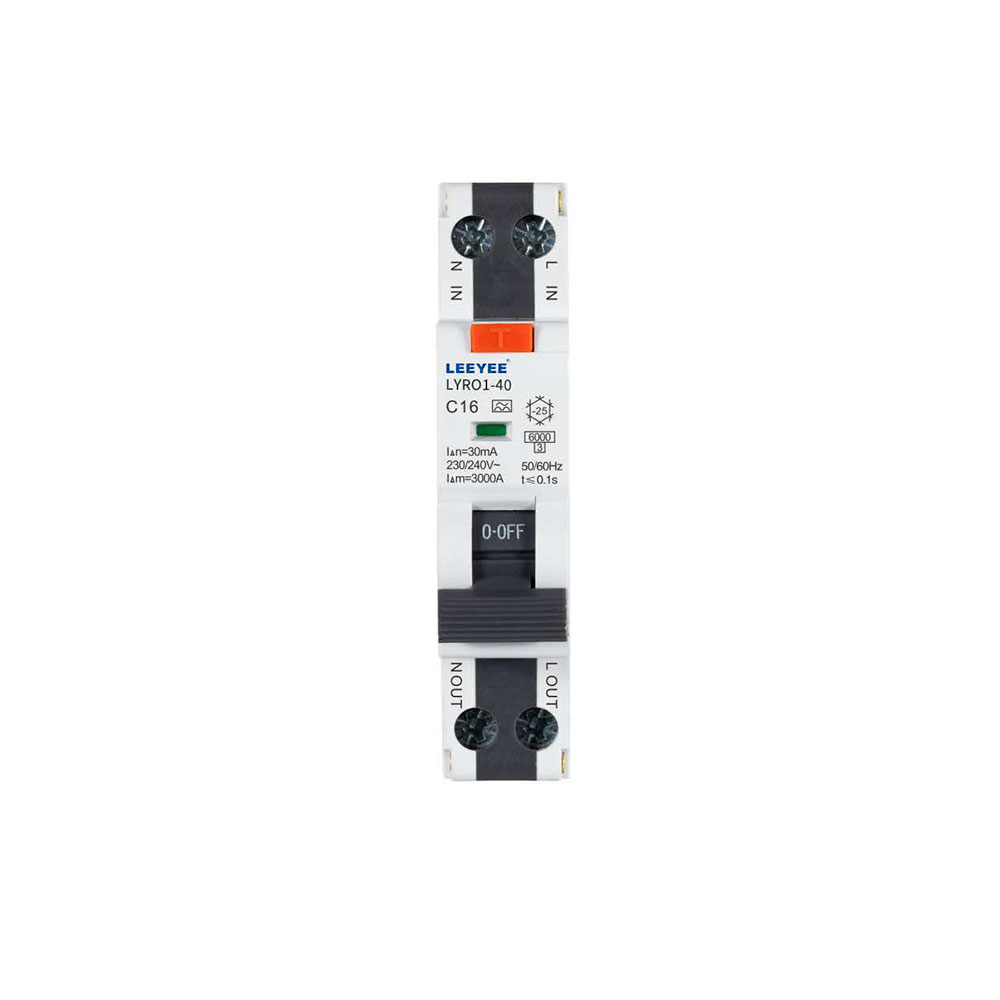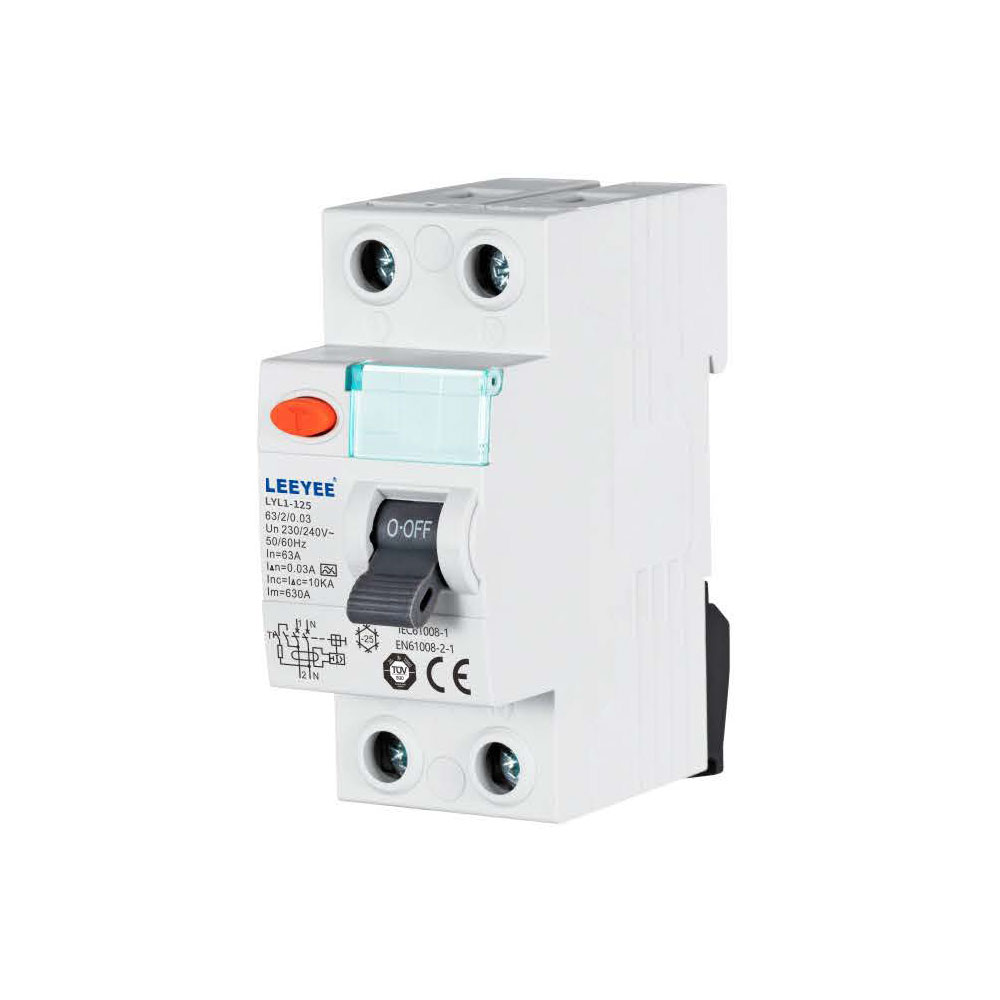Table of Contents
1. Introduction
In our increasingly electrified world, the safety of electrical systems is paramount. With the growing dependence on electrical devices, ensuring protection against electrical faults is critical to prevent accidents, injuries, and property damage. Among the various protective devices available, RCCB (Residual Current Circuit Breaker), RCBO (Residual Current Circuit Breaker with Overcurrent Protection), and RCD (Residual Current Device) stand out as essential components in electrical safety. This article will explore these three devices in detail, highlighting their definitions, working principles, features, applications, installation requirements, maintenance tips, and guidelines for choosing the appropriate device for specific needs.
2. Basic Definitions
2.1 RCCB (Residual Current Circuit Breaker)
RCCB is a protective device designed to detect leakage currents in electrical circuits. It monitors the balance of electrical current flowing through the live wire and the neutral wire. If it detects a difference—indicating that some current is leaking to the ground—it will quickly disconnect the power supply. The primary function of RCCB is to protect individuals from electric shock and prevent electrical fires caused by leakage currents.
2.2 RCBO (Residual Current Circuit Breaker with Overcurrent Protection)
RCBO combines the functions of an RCCB and an MCB (Miniature Circuit Breaker). It provides protection against both leakage currents and overcurrent conditions (overload and short-circuit). This dual functionality allows it to disconnect the power supply when it detects either a leakage current or an excessive current flowing through the circuit. RCBOs are particularly useful in scenarios where space is limited, as they combine two protective functions into a single device.
2.3 RCD (Residual Current Device)
RCD refers to a general category of devices that provides leakage protection. While the term is often used interchangeably with RCCB, RCDs may not necessarily include the automatic disconnection feature that RCCBs have. RCDs are primarily designed to protect people from electric shocks caused by leakage currents. In some contexts, RCDs may represent simpler devices without overcurrent protection capabilities.
3. Working Principles
3.1 Working Principle of RCCB
The RCCB operates based on the principle of current balance. It contains a current transformer that continuously monitors the current flowing through the live and neutral wires. Under normal conditions, the current in both wires should be equal. When a leakage occurs, the current will be unbalanced, and the RCCB will detect this difference. The device is designed to trip and disconnect the circuit within milliseconds when it detects a leakage current above a predetermined threshold (usually 30mA for human protection).
3.2 Working Principle of RCBO
RCBOs function similarly to RCCBs but with an added mechanism for overcurrent protection. They continuously monitor both leakage currents and the overall current flowing through the circuit. When the current exceeds a specified level (indicating an overload or short-circuit), the RCBO will trip and disconnect the power supply. This dual monitoring ensures that the circuit is protected against both electrical shocks and potential damage due to excessive current.
3.3 Working Principle of RCD
RCDs monitor the current flowing through the electrical circuit, much like RCCBs. They detect imbalances in the current and trip the circuit when a leak is detected. However, RCDs may not have the same level of sophistication as RCCBs, lacking features such as automatic disconnection under overload conditions. RCDs are typically simpler devices focused primarily on protecting individuals from electric shocks.
4. Key Features and Characteristics
4.1 Features of RCCB
- Leakage Protection: RCCBs are specifically designed to protect against leakage currents, providing essential safety for individuals in residential, commercial, and industrial settings.
- Fast Response Time: RCCBs can disconnect the power supply within milliseconds, minimizing the risk of electric shock and fire hazards.
- Rated Leakage Current Options: RCCBs are available in various rated leakage current options, such as 30mA, 100mA, and 300mA, allowing users to select the appropriate level of protection based on the application.
4.2 Features of RCBO
- Dual Protection: RCBOs offer both leakage and overcurrent protection, making them versatile devices suitable for various applications.
- Space-Saving Design: By combining two protective functions into one device, RCBOs are ideal for installations with limited space.
- Adjustable Settings: Some RCBOs allow users to adjust the rated leakage current and overcurrent settings, providing flexibility in meeting specific requirements.
4.3 Features of RCD
- Basic Leakage Protection: RCDs provide fundamental protection against leakage currents, ensuring safety for users in various environments.
- Simplicity: RCDs are often simpler devices compared to RCCBs, making them cost-effective options for basic leakage protection.
- Variety of Applications: RCDs can be used in a wide range of settings, from residential to commercial, depending on the specific safety needs.
5. Application Scenarios
5.1 Applications of RCCB
RCCBs are commonly used in high-risk areas of residential buildings, such as:
- Kitchens and Bathrooms: These areas are prone to water exposure, increasing the risk of electric shock.
- Outdoor Circuits: RCCBs are used for outdoor lighting and power sockets, ensuring protection against potential leaks due to environmental factors.
- Public Spaces: In commercial settings, RCCBs are essential to protect customers and employees in areas where water and electricity may come into contact.
5.2 Applications of RCBO
RCBOs are suitable for a variety of applications, including:
- Industrial Equipment: They can protect machinery and equipment that may experience both overload and leakage conditions.
- Residential Circuits: RCBOs can be used in homes where both leakage protection and overcurrent protection are required, providing comprehensive safety.
- Commercial Installations: In commercial buildings, RCBOs offer flexibility and space-saving solutions for protecting multiple circuits.
5.3 Applications of RCD
RCDs are often used in scenarios where basic leakage protection is required, such as:
- Temporary Power Supplies: RCDs are commonly used for temporary electrical setups, such as construction sites or outdoor events.
- Small Appliances: They can be employed for portable devices, ensuring safety when using electrical equipment in various environments.
- Basic Residential Protection: RCDs provide essential protection in residential settings, especially in older homes that may not have advanced protection devices.
6. Installation and Maintenance
6.1 Installation Requirements
The installation of RCCB, RCBO, and RCD devices must adhere to local electrical regulations. Key installation considerations include:
- RCCB: Should be installed in a dry, well-ventilated area, often in the main electrical panel. It should be correctly wired to ensure effective leakage detection.
- RCBO: Similar to RCCBs, RCBOs must be installed according to local codes and should be placed in the distribution board. Proper wiring is crucial for both leakage and overcurrent protection.
- RCD: RCDs should also be installed in dry environments and connected properly to the circuit they are intended to protect.
6.2 Maintenance Tips
Regular maintenance and testing are essential for ensuring the reliable operation of these devices:
- Monthly Testing: It is recommended to test RCCBs, RCBOs, and RCDs monthly by pressing the test button. This action should cause the device to trip, confirming that it is functioning correctly.
- Visual Inspections: Regularly inspect the devices for signs of wear, damage, or corrosion. Any visible issues should be addressed immediately.
- Professional Checks: Consider having a qualified electrician perform comprehensive inspections of the electrical system, including protective devices, at least once a year.
7. Choosing the Right Device
7.1 Considerations for Selection
When deciding between RCCB, RCBO, and RCD, consider the following factors:
- Protection Needs: Assess whether you need only leakage protection (RCCB or RCD) or both leakage and overcurrent protection (RCBO).
- Load Type: Consider the type of electrical devices connected to the circuit. For sensitive equipment, an RCBO may provide more comprehensive protection.
- Space Constraints: In installations with limited space, an RCBO may be the best choice due to its dual functionality.
- Budget: Evaluate the cost differences between the devices and choose one that fits your budget while meeting safety requirements.
7.2 Practical Examples
- Residential Setting: A homeowner may choose an RCCB for bathroom outlets to protect against electric shock, while using RCBOs for general circuits to ensure both leakage and overload protection.
- Commercial Setting: A restaurant might install RCBOs in the kitchen to safeguard against both leakage and overload scenarios, ensuring staff and equipment safety.
- Construction Site: A temporary power setup may use RCDs to provide basic leakage protection for portable tools and equipment.
8. Conclusion
Understanding the differences between RCCB, RCBO, and RCD is crucial for making informed decisions about electrical safety in residential, commercial, and industrial settings. Each device serves a unique purpose, and selecting the appropriate one can significantly enhance safety and reliability.
RCCBs are essential for protecting against leakage currents, while RCBOs provide comprehensive protection against both leakage and overcurrent. RCDs offer basic leakage protection and are suitable for various applications. By considering the specific needs of your electrical system, you can choose the right device to ensure safety and compliance with electrical regulations.
If you have further questions or need assistance in selecting the right device, do not hesitate to reach out to electrical safety professionals or your local electrical supply store.


